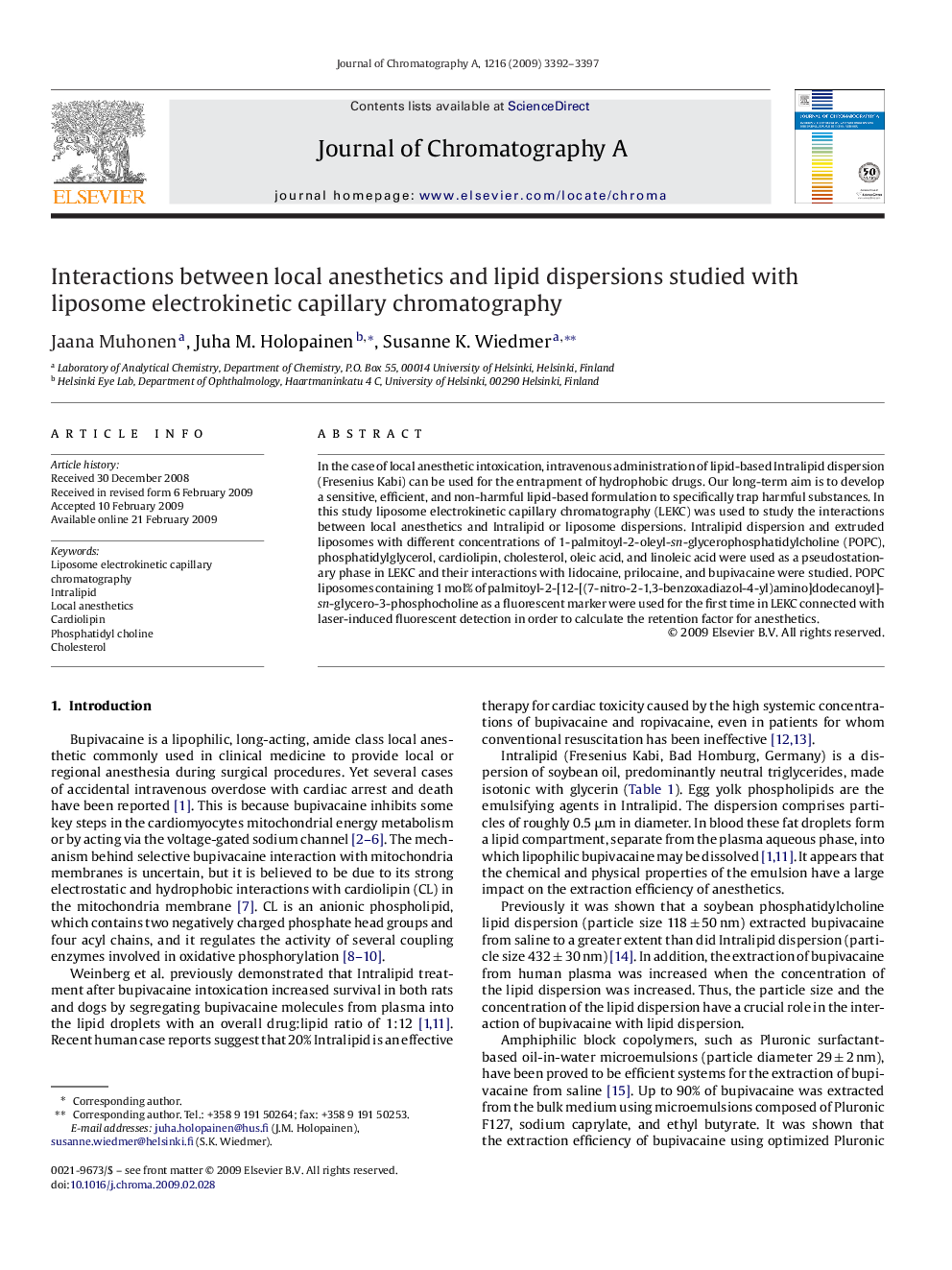| Article ID | Journal | Published Year | Pages | File Type |
|---|---|---|---|---|
| 1204500 | Journal of Chromatography A | 2009 | 6 Pages |
In the case of local anesthetic intoxication, intravenous administration of lipid-based Intralipid dispersion (Fresenius Kabi) can be used for the entrapment of hydrophobic drugs. Our long-term aim is to develop a sensitive, efficient, and non-harmful lipid-based formulation to specifically trap harmful substances. In this study liposome electrokinetic capillary chromatography (LEKC) was used to study the interactions between local anesthetics and Intralipid or liposome dispersions. Intralipid dispersion and extruded liposomes with different concentrations of 1-palmitoyl-2-oleyl-sn-glycerophosphatidylcholine (POPC), phosphatidylglycerol, cardiolipin, cholesterol, oleic acid, and linoleic acid were used as a pseudostationary phase in LEKC and their interactions with lidocaine, prilocaine, and bupivacaine were studied. POPC liposomes containing 1 mol% of palmitoyl-2-[12-[(7-nitro-2-1,3-benzoxadiazol-4-yl)amino]dodecanoyl]-sn-glycero-3-phosphocholine as a fluorescent marker were used for the first time in LEKC connected with laser-induced fluorescent detection in order to calculate the retention factor for anesthetics.
